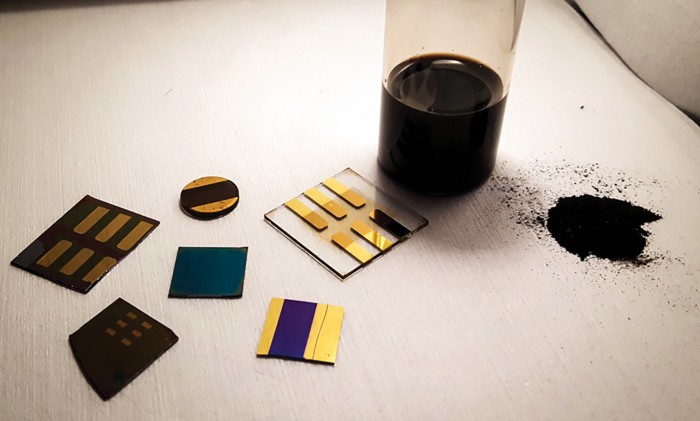Making High Tech from Coal
Maybe we’ve been looking at coal all wrong. Instead of just burning it, thus ignoring the molecular complexity of this highly varied material, says Professor Jeffrey Grossman, we should be harnessing the real value of that chemistry. He and his research team think that coal could become the basis for solar panels, batteries, or electronic devices.
As a first demonstration of what they see as a broad range of potential high-tech uses for this traditionally low-tech material, Grossman, doctoral student Brent Keller, and research scientist Nicola Ferralis made a simple electrical heating device. In the process, they also characterized in detail the chemical, electrical, and optical properties of thin films of four different kinds of coal: anthracite, lignite, and two bituminous types. Their findings were reported earlier this year in the journal Nano Letters.
“When you look at coal as a material, and not just as something to burn, the chemistry is extremely rich,” says Grossman, a professor of environmental systems in the Department of Materials Science and Engineering (DMSE). “Could we leverage the wealth of chemistry in things like coal to make devices that have useful functionality?” The answer, he says, is a resounding yes.

It turns out that unpurified, naturally occurring coal varieties have a range of electrical conductivity spanning seven orders of magnitude. That means that some variety of coal could inherently provide whatever electrical properties are needed for a particular component.
“The material has never been approached this way before,” says Keller, who carried out much of the work as part of his doctoral thesis in DMSE. To learn about its properties, he developed a method for making thin films of coal, which could then be tested in detail and used for device fabrication.
This new, detailed characterization is just the tip of a large iceberg, the team says. The four varieties selected are just a few of the hundreds that exist, all with what are probably significant differences. And preparing and testing the samples was, from the outset, an unusual process for materials scientists. “We usually want to make materials from scratch, carefully combining pure materials in precise ratios,” says Ferralis, also in DMSE. In this case, though, the process involves “selecting from among this huge library of materials,” all with their own different variations.
The simple heating device the team made as a proof of principle demonstrates how to use the material, from grinding the coal to depositing it as a thin film and making it into a functional electronic device. Now, they say, the doors are opened for a wide variety of potential applications through further research.
Keep Reading
Most Popular
Large language models can do jaw-dropping things. But nobody knows exactly why.
And that's a problem. Figuring it out is one of the biggest scientific puzzles of our time and a crucial step towards controlling more powerful future models.
The problem with plug-in hybrids? Their drivers.
Plug-in hybrids are often sold as a transition to EVs, but new data from Europe shows we’re still underestimating the emissions they produce.
How scientists traced a mysterious covid case back to six toilets
When wastewater surveillance turns into a hunt for a single infected individual, the ethics get tricky.
Google DeepMind’s new generative model makes Super Mario–like games from scratch
Genie learns how to control games by watching hours and hours of video. It could help train next-gen robots too.
Stay connected
Get the latest updates from
MIT Technology Review
Discover special offers, top stories, upcoming events, and more.